How I Do It: Conversation Practice with Teens and Young Adults by Angela Adams
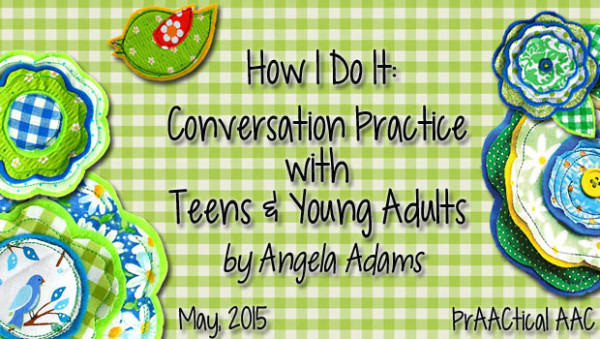
Angela Adams is next up in our Better Hearing and Speech Month lineup. Angela is an SLP in a school district in Washington where she works with middle and high school students, many of whom use AAC. In this post, she shares some thoughts on helping them build conversational skills.
::::::::::::::::::::::::::::::::::::::::::::::::::
In March 2015 I had the pleasure of attending AAC in the Desert in sunny Phoenix. Presenters Caroline Musselwhite, Erin Sheldon, and Gretchen Hanser sent us away with tons of information. I used Caroline Musselwhite’s idea of Co-planned conversation scripts as a basis for the following activity. Working in a school system and with a variety of staff, it is highly beneficial when the activity is organized and has simple instructions.
- Take screen shots of the phrases needed for the conversational activity.
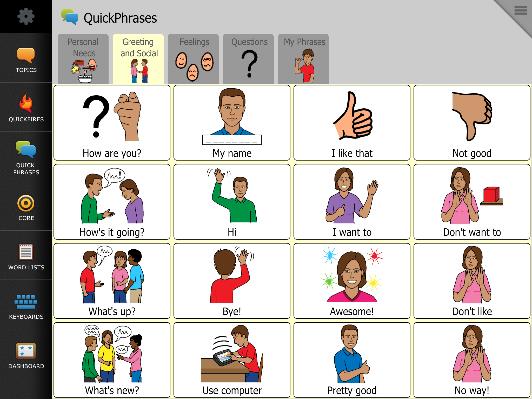
- Cut out the social phrases needed and then laminate. I labeled the back of each phrase card so any person assisting the AAC user knows where to locate the phrase in communication app (the following example ‘QP’ stands for Quick Phrases).
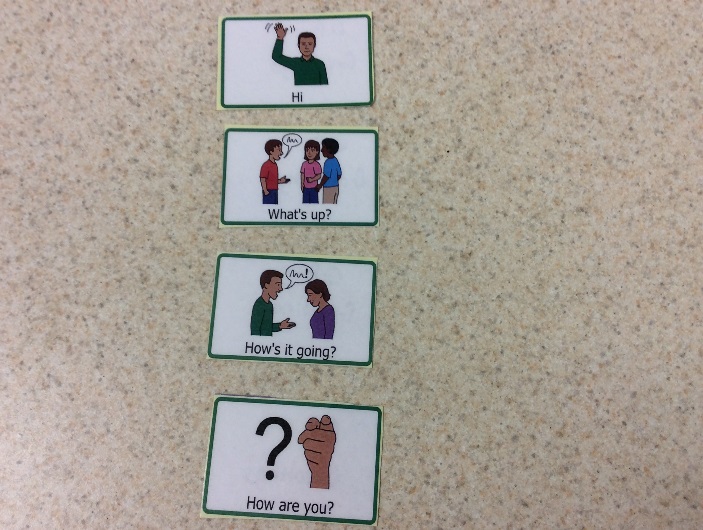
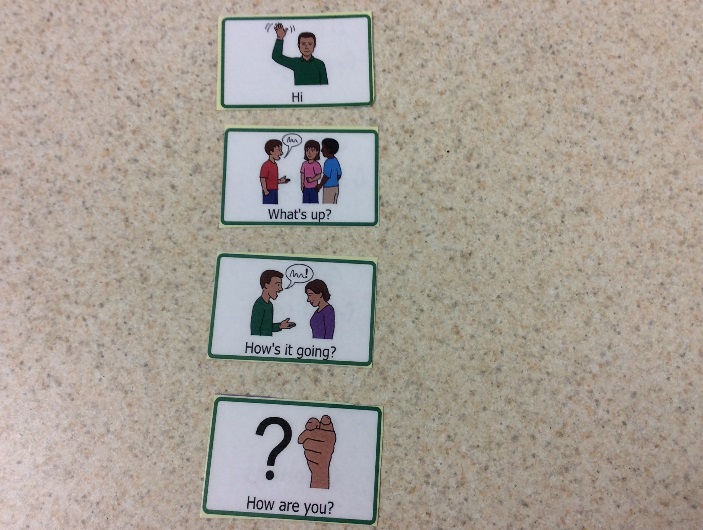
- Separate phrase cards according to conversation structure (Attention Getters, Starters, Maintainers & Holders, Turn-transfer questions, Closures & Farewells). Bag labels from: Anatomy of a Conversation, Suggested Conversational Messages, taken from a variety of workshops, Linda Burkhart and Caroline Musselwhite, 2000-2001.
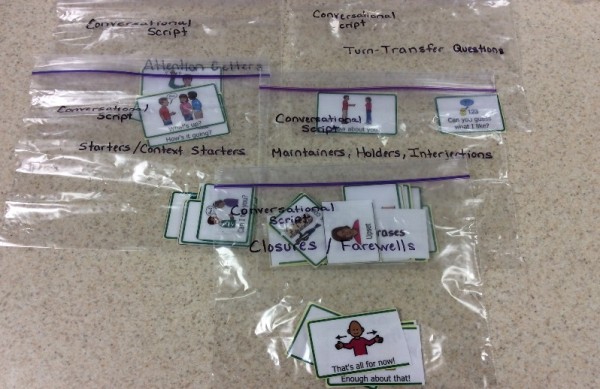
- The phrase cards are visuals for the AAC user as you are planning the conversation together.
- I put together simple co-planned conversational script instructions in a binder for the classroom staff to have and use. Work with the student to choose which conversational phrases will be used in the planned conversation. The phrase cards can be used as a visual for the students (students may benefit more from the visual cues than the written words as you write out the planned conversational script).
- Practice!
- Some of the AAC newbies in the high school Lifeskills classroom have monthly phrases assigned to him or her. This month’s phrases complement the goal of conversational script practice.
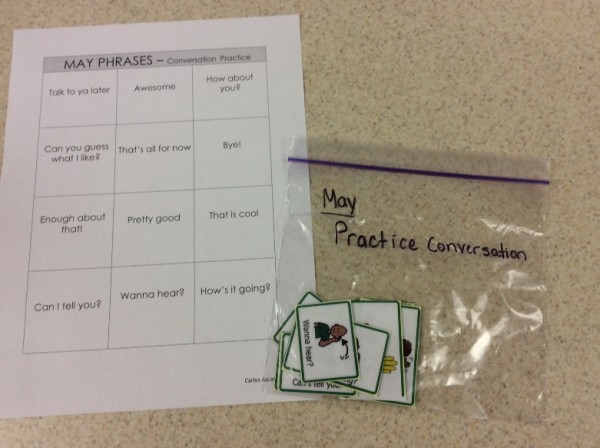
Filed under: PrAACtical Thinking
This post was written by Carole Zangari
